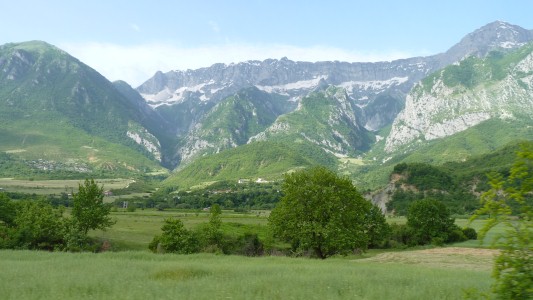
The River Vjose
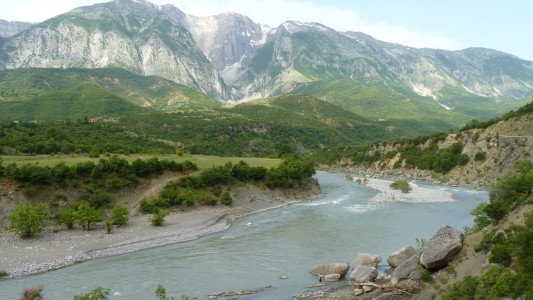
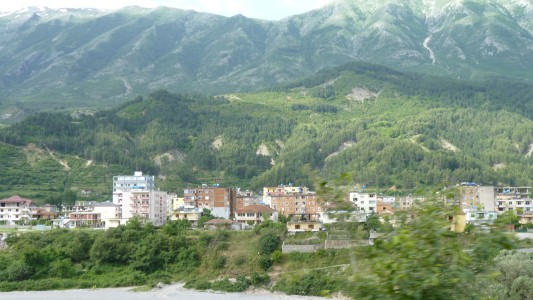
The suspension bridge was limited to 8 tonne.
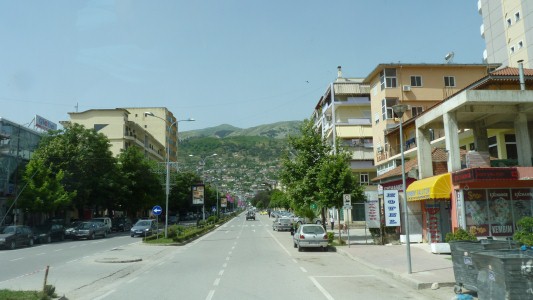
Turned right at the first (northerly) roundabout to see if we could drive higher up the valley side towards the old town.
Parked on a bus stop.
Did a recce.
Returned and drove to the second roundabout (southerly on the main road) then followed the sign up the hill.
Parked near the square, hidden by a couple of tour buses.
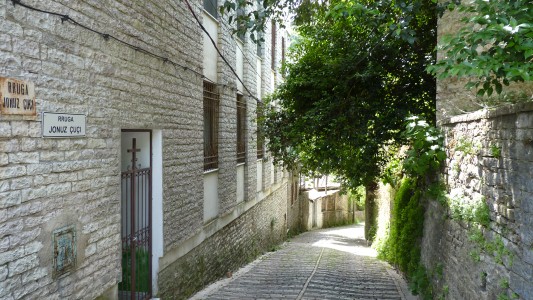
Stone buildings with stone roofs, and a castle.
And stone roads.

Which need a bit of support for the weight of stone on the roof.
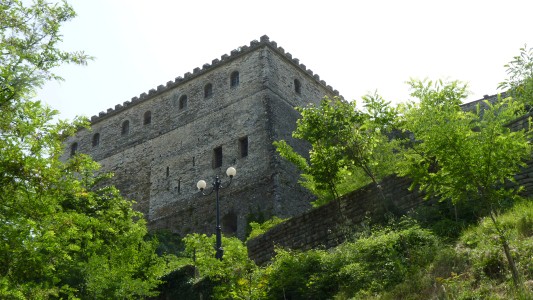
We walked up to the cloud shrouded, dark, gloomy, castle, like something from a vampire movie, protected by crows, with the blood-chilling history.
The castle that is, not the crows.
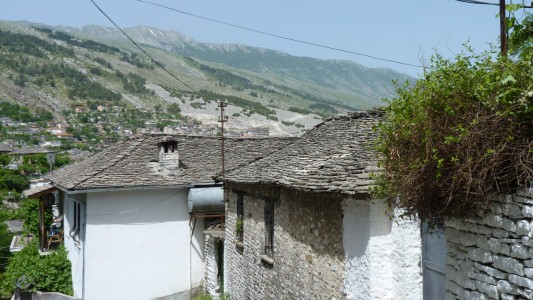
We only saw one crow, there were no clouds, our blood was hot from the sun, and to the best of our knowledge there were no vampires.
Some of the buildings are original, some rebuilt.
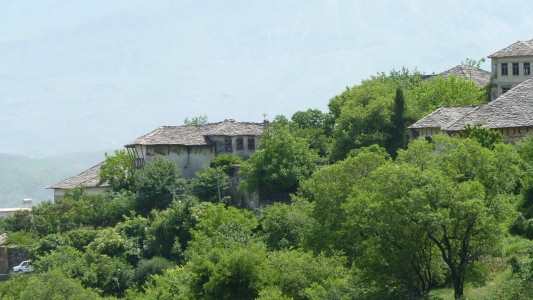
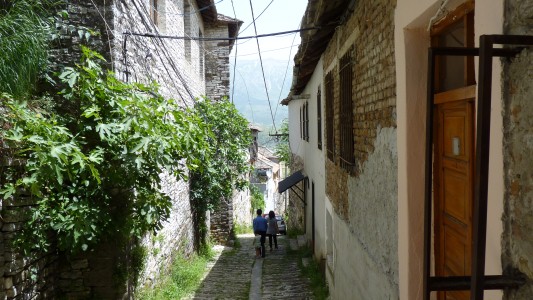
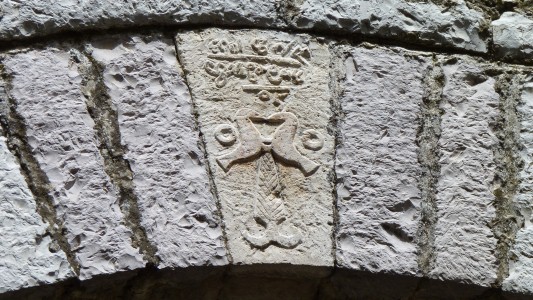
The Ottomans were here.
The language we here spoken is distinctly different to the Albanian we've heard further north.
We think Italian.
We've also begun to see Greek on signs.
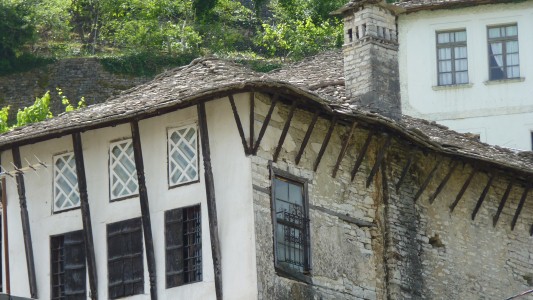
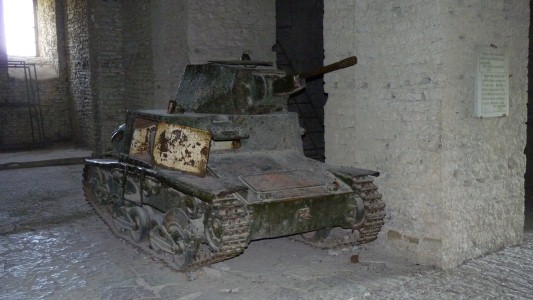
It also has a collection of first and second world war guns.
This is a second world war Italian Fiat tank.
We know its Italian because it is on the right of the gallery. The captured German guns are on the left.
Its apparently coal fired, possibly steam engined. Described in the castle guide as "slow".
Captured at Porto Palermo, a bit up the coast from here.
We can't imagine why only 243 were built.
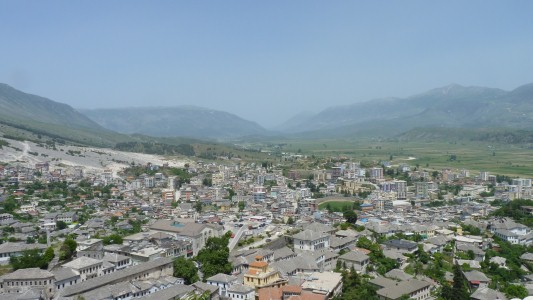
It flows north, joins the Vjose, and heads north west to the sea.
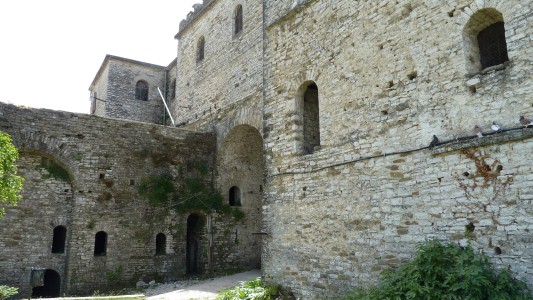
The castle building really began in the 12th - 15th century.
Then there was Ali Pasha in the 18th century.
There was an Ottoman prison built in the 15th century. The castle was also used as a prison during the communist era until 1968.
Perhaps stories of torture would chill our blood.
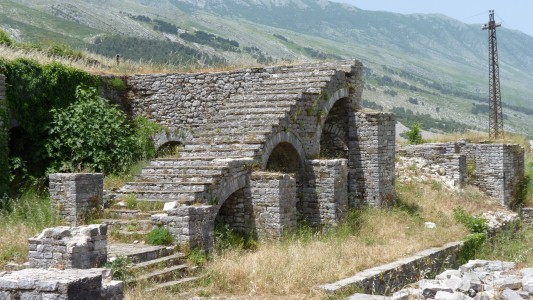
I liked the half arches.
Would you believe something I can't recall from elsewhere, though surely not unique.
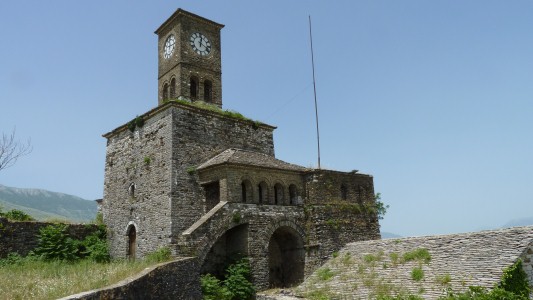
The 12 km aquaduct supplying water was demolished in 1928 to provide road, house and prison building materials.
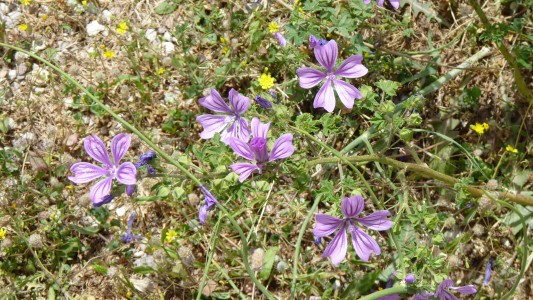
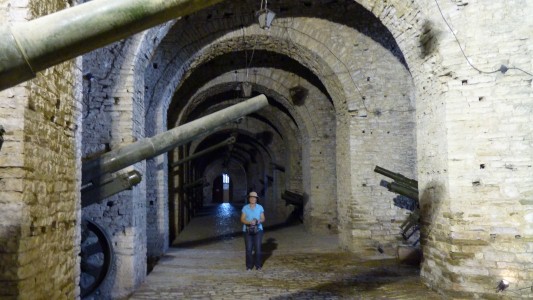
Looking the other way .... Italian on the left, German on the right.
Or is it the other way round?
Ali in the middle.
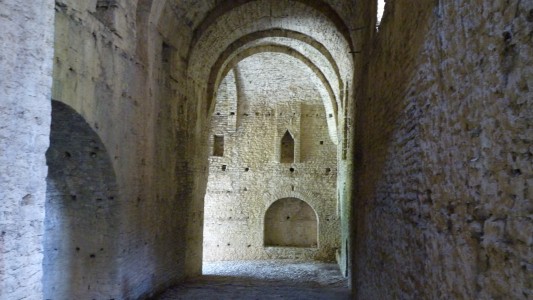
At least three storeys.
They almost belong in a cathedral.
I have a sneaking suspicion there were wooden floors and ceilings in here somewhere at one time but there's not a rotting timber beam in sight.
This is the later western end of the castle.
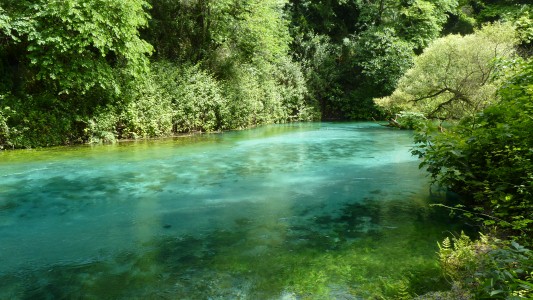
Where the camera battery became discharged and the spare was in the truck.
The eye is a deep spring with a dark blue centre.
The water has that colour from limestone and is crystal clear.
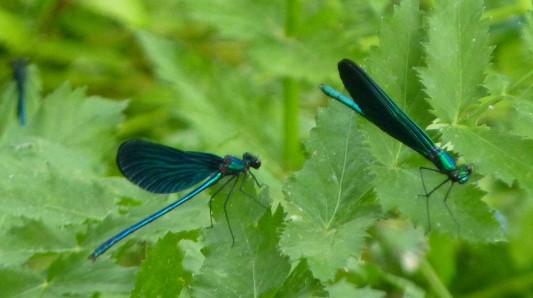
There are two restaurants, one also a hotel, at Blue Eye Spring. Both newish looking.
The surrounds to the spring itself were looking a bit timeworn (complete with collapsing unusable bridge and rusty viewing platform), which along with the rubbish detracted a bit from the spring.
And two gatekeepers near the main road charging an entry fee, inflated from 50 leke to 200 leke in 3 years..
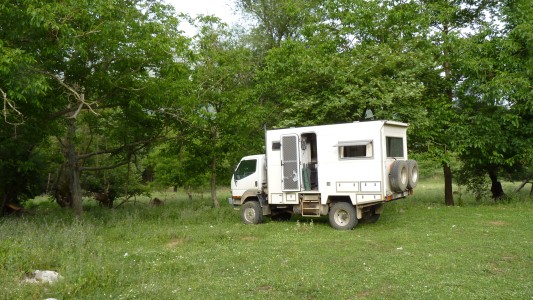
Among oak and chestnut trees.
Though even there it looked like a tour bus sized party had lunch and left all their plastic plates and cups.
For a while we shared the field with some cattle. The herder appeared to take them for milking and wasn't particularly interested in us.

Holiday homes for Albanians.
We took a wrong turn.
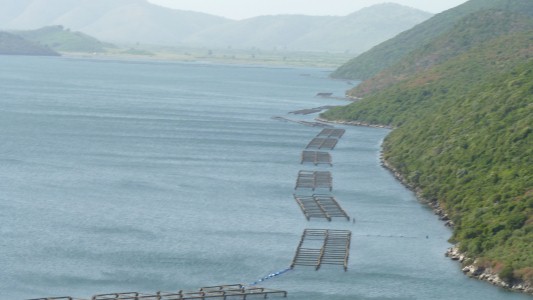
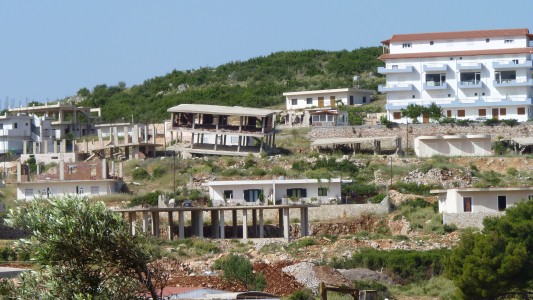
Building standards met reality.
The building in the center lacked some foundation.
Others suffered from a lack of cross bracing and concertinad.
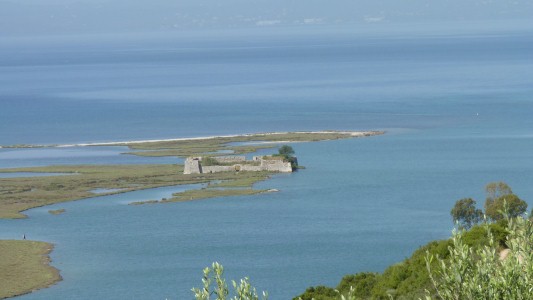
At least one of them.
At the entrance to the channel into Butrint.
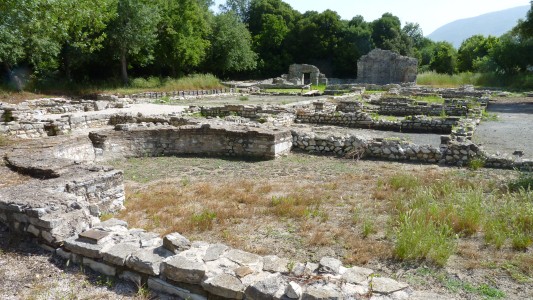
The city was apparently founded by exiles fleeing Troy.
First substantial settlement around 4th century BC.
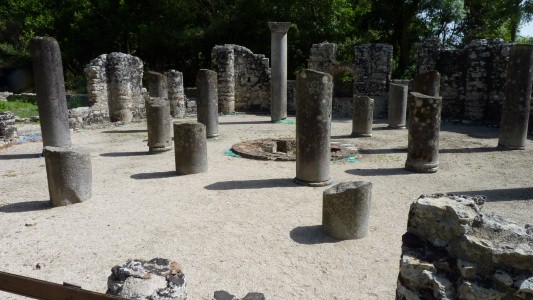
We had to buy a postcard to see the mosaic under the sand.
Its there to protect. Cleaned off every so often for study and tourists.
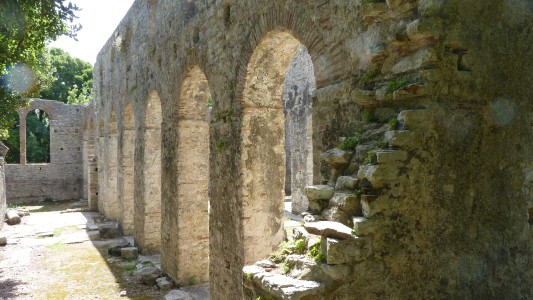
Early Christian Church about 6th century.
Butrint expanded as the Roman Empire rose.
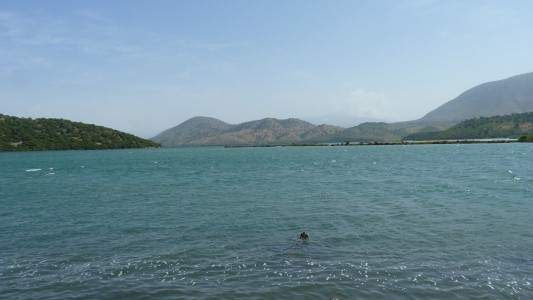
The old town is on a promontory.
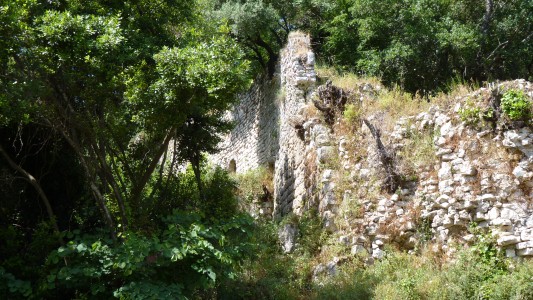

The Lake Gate.
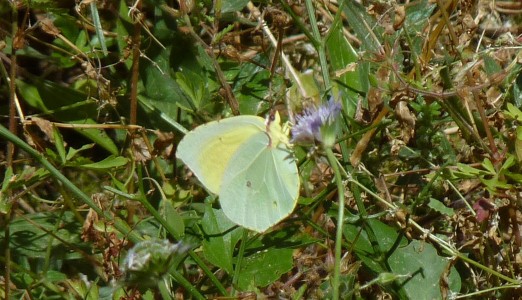
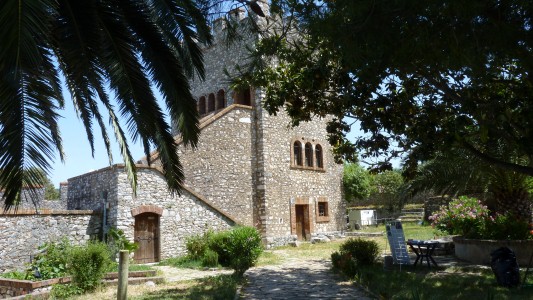
In 1386 the town was bought by the Venetians.
It became an outpost of Venetian Corfu.
This Venetial tower was built in 15th - 16th centuries.
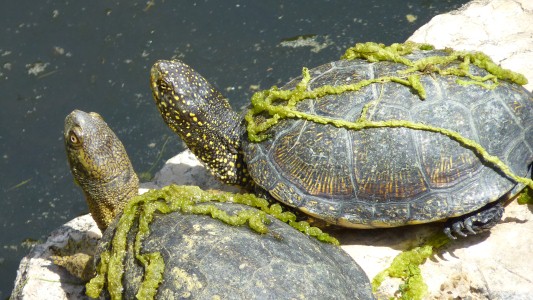

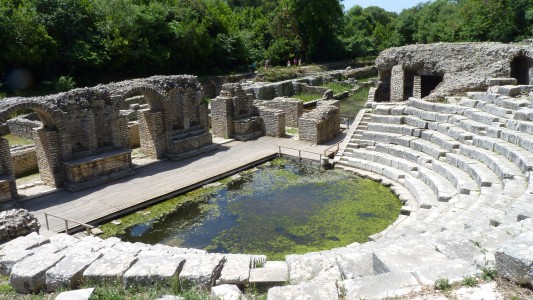
Sea level in the area has risen.
The guide pamphlet and all the info boards are first class.
All sorts of drawings of what it all may have looked like at various periods..

The town had declined to be a fishing village by the 19th century.
Goverened by Ali Pasha who built the castle at the mouth of the channel.
Byron and Edward Lear visited.

There's a small ferry on a wire rope that crosses the channel.
There's a triangular Venetian fort on the far side and other Roman ruins.
The aquaduct was demolished.
We retreated to Ksamil to rest and camp for a couple of nights.
The hydrofoil is passing between us and Corfu.

I sailed through here in 1978 on the way to Igoumenitsa. When people were worried about what would happen when Jugoslavia inevitably broke up, and Albania was closed.
An odd sort of campsite at the northern boundary of the village. Half the price of the somewhat cramped one with no view on the hill opposite, loo (and cassette empty) in the disco and water from a hose.
Disco at times noisy, and a generator for the power cuts.
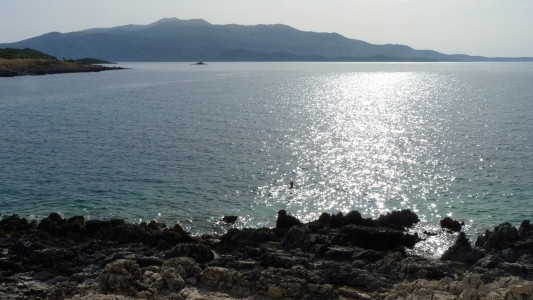
Clean Mediterranean water is often an oxymoron but here was clear.
Water just the right temperature.
That's me just to the left of the sun's reflection.
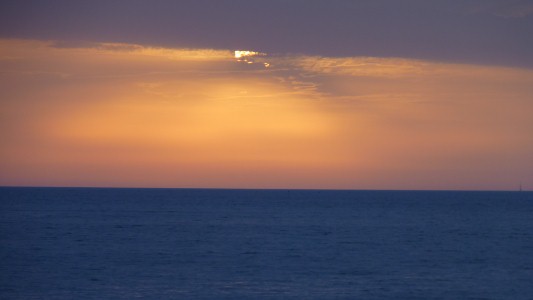
Building standards must be a bit lax as several of the concrete pillar and beam multi-storeys have collapsed before completion.
Maybe a lack of cross bracing.
So we contented ourselves with a couple of days of sunset watching.
It rained and blew on the third night.